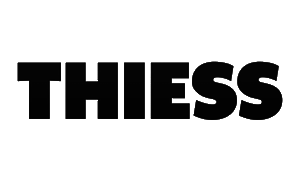
Blog
How To Help Employees Combat Digital Distractions
We can’t argue with the incredible benefits we have gained from the digital revolution. Business communication is much faster, and research is at our fingertips. We also have access to so much data, allowing us to make far more informed decisions than ever before.
But as with every marvellous invention, there is a downside. Having the world on our smartphones leads to immense distractions. How often have you found yourself at work when your phone pings? Yes, you can’t resist the urge to take a peek. After all, it could be an important email, or it could be a friend posting a funny video.
The shocking statistics show that 45% of the world’s population is using social media. Each person spends an average of 2 hours and 23 minutes each day on social media. It is difficult to measure the impact of these distractions on productivity because productivity can be assessed in many different ways. But most people agree that digital distractions take focus away from the task at hand.

The Impacts of Digital Distractions at Work
Managers may assume that this isn’t a problem in their office. After all, what’s the harm if an employee quickly checks their phone. The problem is that it is rarely a few minutes, and one distraction leads to another. Here are just a few figures that show the real impact of digital distractions in the workplace:
- 74% of Millennials and Gen Z-ers feel that they are distracted
- 62% of workers admit to spending approximately one hour each workday on their mobiles
- Digital distractions cost an average of $10,000 per employee per year in 2012
- 34% of employees like their job less when they feel distracted
- Even brief interruptions can cause 50% more work errors
- 66% of employees have not discussed this problem with managers
- 49% of workers are happier at work with distraction training or policies
How to Combat Employees’ Digital Distractions?
Use website blockers
Ironically, technology may solve one of today’s problems with technology. A small study on 23 information workers showed that distraction blocking apps increased their productivity and allowed them to concentrate for longer. These apps can be used in the office as well as for those who work remotely.
Introduce the Pomodoro Technique
Simply banning the use of mobile phones is not an effective strategy. Your office will become a high school with employees sneaking to the toilet to check their phones. The Pomodoro Technique teaches people to fully concentrate on one task for 25 minutes and then take a 5-minute break. This technique encourages high productivity in bursts of uninterrupted periods.

Rearrange your workspace
A study from Harvard Business School showed that open office plans—as opposed to cubicles—could have a positive effect on both productivity and collaboration. The ability to communicate better with colleagues reduces the need to connect to the digital world, and teams can achieve more.
But for some people, this can provide a different kind of distractions. If possible, it is a good idea to have some small office spaces where employees can work when they feel the need. If this isn’t viable, noise-cancelling headphones are an excellent solution.
Create a plan for urgent circumstances
We have all heard the genuine excuse of “but what if it’s an emergency”. It makes good sense for managers to introduce a protocol for urgent messages and emails. Employees can then be notified when there is something critical happens and don’t feel the need to check their phones regularly. It can be something as simple as a unique message tone for urgent messages that everyone in the office can send and receive.
Lead by example
It’s logical for employees to assume that it is acceptable for them to be always on their phones if the bosses are doing it. Before you expect others to put away their distractions, leaders have to do the same.
What Can Be Done to Reduce Digital Distractions for Remote Workers?
Many of the practices and policies managers introduce into the office can be used by remote workers too. Website distraction blockers and specific urgent message ringtones should be standard for the whole office.
Educating remote works on how to set up their work environment will also help them to avoid becoming distracted. While working 9 to 5 might be ideal for you, those that are working from home have other responsibilities. So, allowing flexible working hours gives them a chance to structure their working day around distractions.
In Conclusion
It’s worth bearing in mind that in many cases, digital distractions are more than just a bad habit and may even have got the stage of being an addiction. Research suggests that digital distractions impact the workplace environment. However, little is known about how each person handles digital distractions. It is unlikely that going “digital cold turkey” is going to have the desired results, so consider introducing your policies gradually.
Recent Posts
-
Working From Home — Ultimate Security Tips for a Safe Home Office
-
Unexpected Ways Stress Affects Your Body
-
The Worst Mistakes to Make When Working from Home
-
The Undeniable Worst Mistakes to Make in a Meeting
-
The Top 6 Myths About Leadership Debunked
-
The Best Apps for Busy Professionals
-
Is Telecommuting the Answer to Work-Life Balance?
-
The Importance of Career Goals to Boost Success at Work
-
The Shocking Dangers of Workplace Burnout
-
How to Restart Your Positive Emotions
























